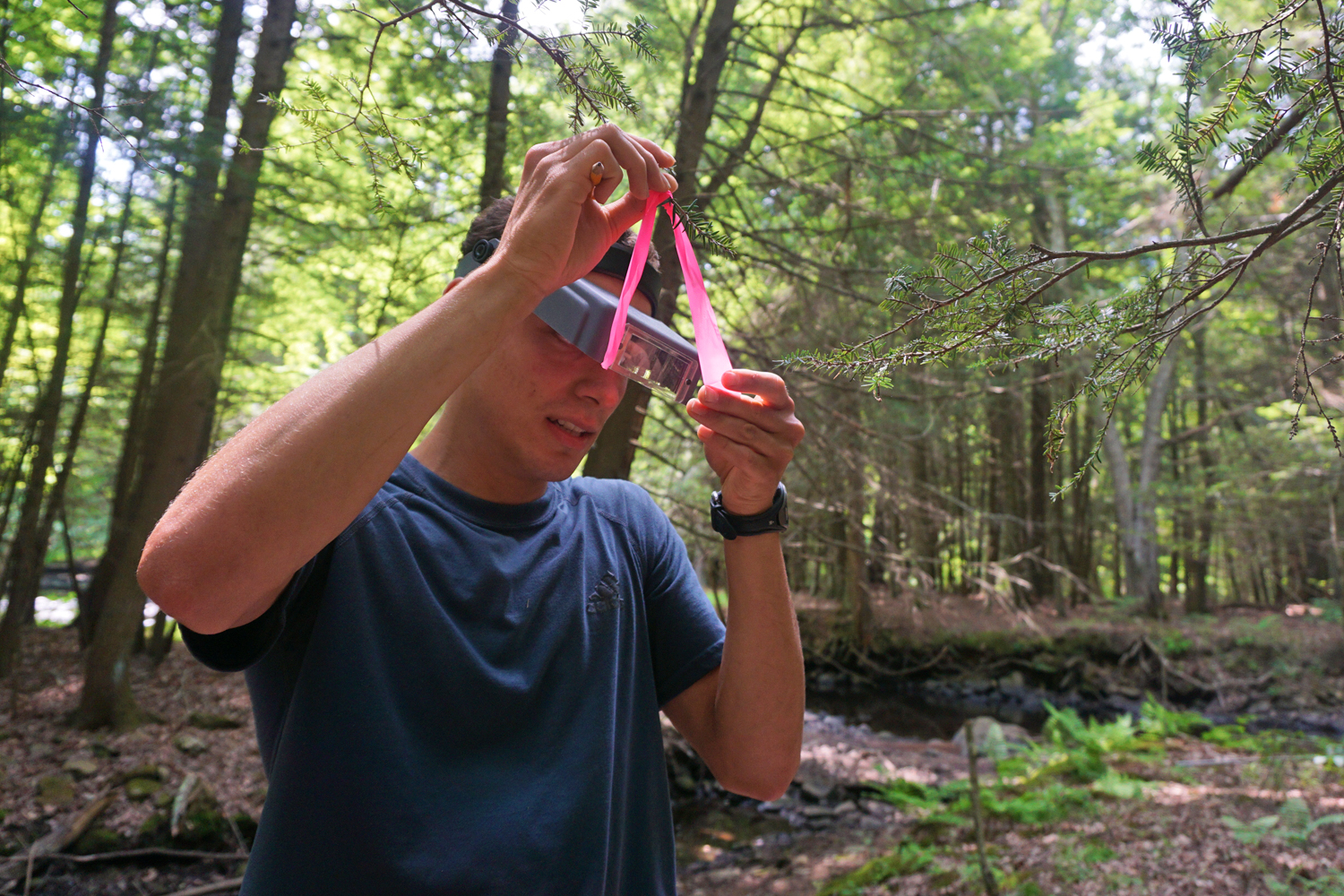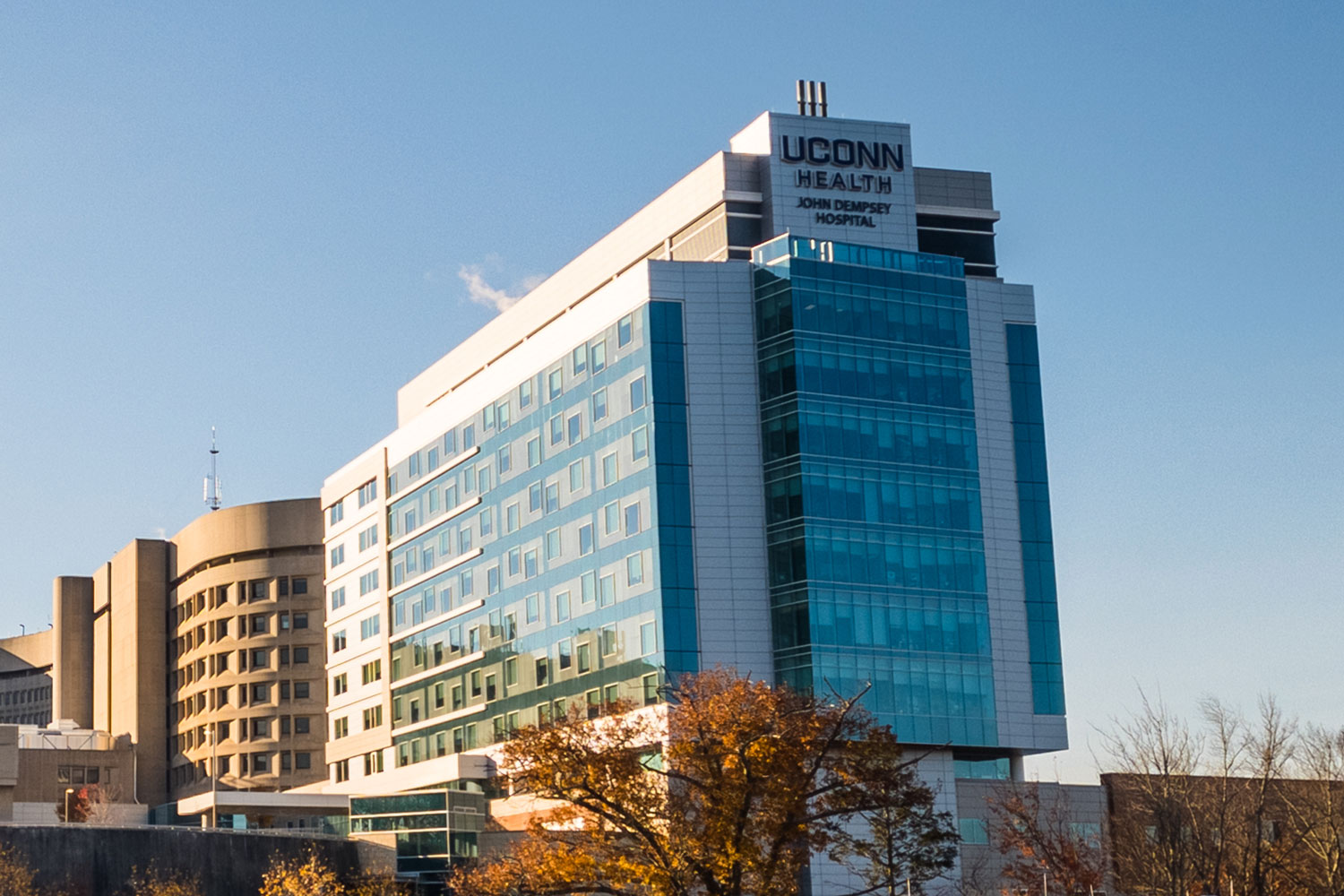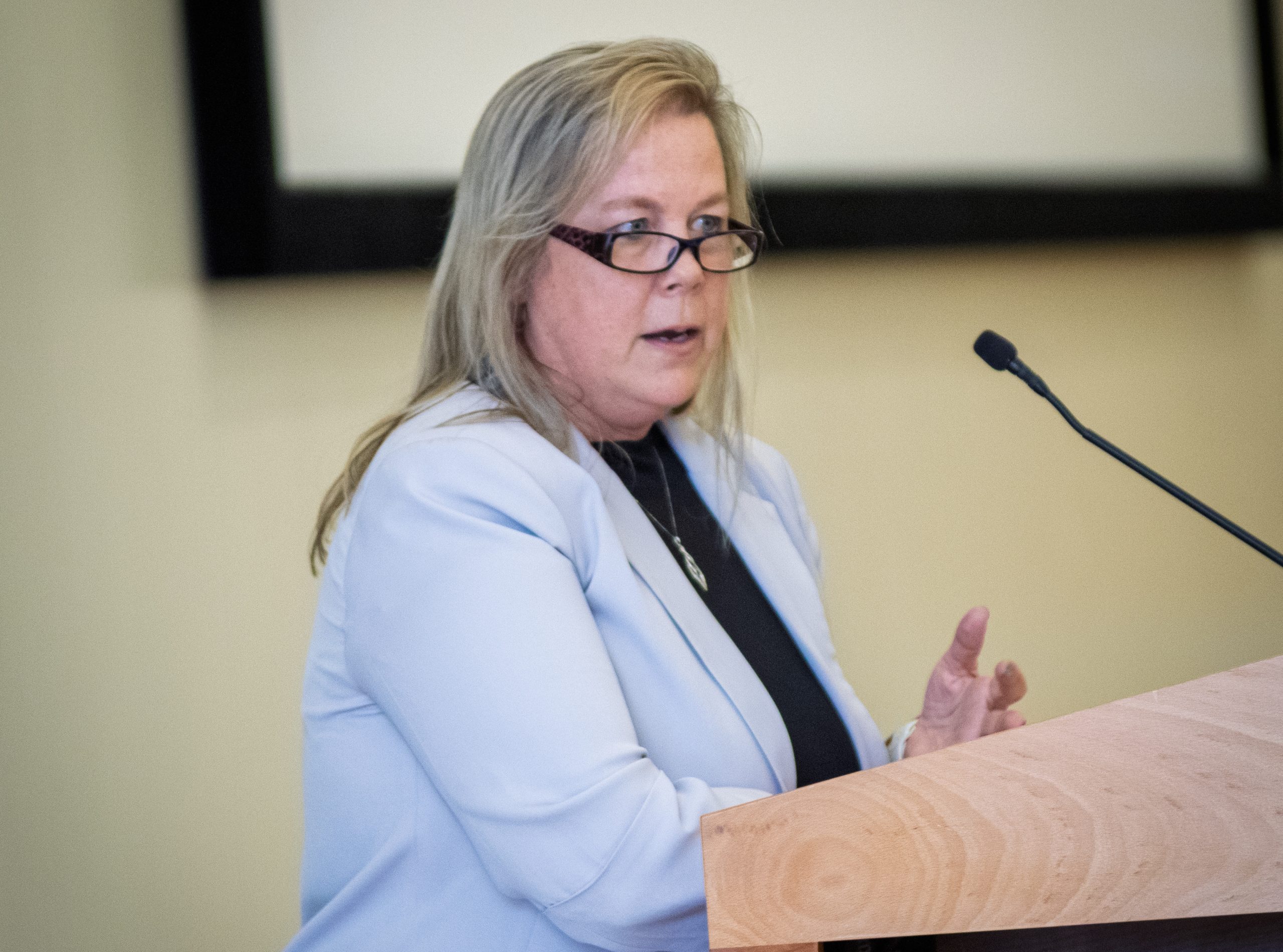Junior ecology and evolutionary biology student Nick Russo bounded easily across a flowing river by walking atop a fallen tree. He used one hand to hold onto the branches for balance and tucked a composition notebook and jewelers headset under his other arm.
Once on solid ground, Russo pried off a branch from a hemlock tree to reveal the reason he goes out into the field four days a week. Nestled into the base of the hemlock needles were several clusters of white, web-like sacs.
A few hundred yards past the stream, Russo arrived at the first observation site he set up in UConn Forest. Tied to four of the branches were hot pink ties that look like thick ribbon. Nick threw his jewelers headset over his eyes and closely examined the pink flagging, counting how many hemlock woolly adelgid had hatched from their egg sacs and crawled out. The amount varied based on the tree: Some had none, others four or five, and some even had around twenty crawlers, or bugs in the nymph stage. The flagging helps him return to this site again to track their activity.
Hemlock woolly adelgid is an invasive insect that came to the U.S. from Japan in the 1950s when a landscaping company in Virginia ordered Japanese Hemlock trees. The bugs suck sap and nutrients out of trees.
“After so many years they can kill the trees,” Russo explained. “When infestations get really bad, eventually the tree won’t be able to produce new growth, and then they’ll lose all their needles and die.”
Hemlock woolly adelgid has destroyed over 60 percent of hemlock forests in the Eastern U.S. Close to 25 percent of hemlocks across the U.S. are infested already.
Russo’s research is set to be published in the academic journal Environmental Entomology this fall. His work on these invasive insects will help scientists and the public understand whether the bugs could spread further north into other, untouched forests.
Morgan Tingley, assistant professor of ecology and evolutionary biology and Russo’s research advisor, said, “I imagine it’s pretty rare to have undergrads first-author publications on projects of their own creation, particularly long before their senior theses.”
An Early Naturalist
At a young age, Russo would sit at the breakfast table studying a field guide while eating his cereal. He would memorize facts and look at the pictures.
“I’d think, ‘Oh wouldn’t that be so cool to see a black-throated green warbler?’ From there, I just ended up remembering things,” Russo said.
When he was ten, Russo started venturing to the forest with his sister to catch frogs and toads, which led him to exploring by himself. He started with catching salamanders, then learning all the plant names, and eventually identifying birds.
“I like bird songs a lot,” Russo said. “I’ve always liked hearing their songs and then being able to identify them. There are so many more species out there that you wouldn’t notice unless you pay attention.”
Russo came to UConn knowing he wanted to do ecology research. In his two years, Russo has been a founding member of the UConn Birding Club, a member of the genetic engineering team, and a student researcher.
It was a genetic engineering conference in Boston that led him to think about what plagues trees in Eastern North America.
“I remembered hemlock woolly adelgid because we had some in my neighborhood,” he said. “When I was in high school, I had wanted to figure out what it was. I didn’t think much more about it until I came [to UConn].”
At first, he did not think that catching birds and counting adelgid crawlers would amount to much. But Tingley saw a lot of value in Russo’s research because, he says, no one else is doing this kind of work. Now, Russo is the recipient of both the Holster and Udall Scholarships.
Spreading an Invader
To figure out if birds are the cause of the spread, Russo looks at how active the crawlers are on the trees, while also tracking how many of the bugs are found on the birds. He catches birds and extracts adelgids from their feathers, to determine whether birds are spreading the bugs to other forests.
He wants to know whether migratory birds are more likely than non-migratory birds to carry the bugs from forest to forest. If migratory birds are the culprits, then this invasive species could spread to forests father north that are not currently infested.
“There aren’t as many crawlers out during the breeding season,” Russo explained. “It’s like a perfect intersection when the dispersible stage of adelgid is just running rampant and when birds are flying north.”
Deep in the UConn Forest, Russo uncovered a tree particularly populated with what an untrained eye would likely mistake for a small grain of cracked pepper. He counted more than twenty crawlers, noting using cardinal directions which branches he found them on. Then he tied a piece of flagging to a tree that was not infested, to serve as a control. From this summer’s work, he’s hoping to find that crawler activity is high around the same time that birds begin to migrate.
“I think [this work] suits me well because I like to go to a bunch of different places, and I like being outside,” Russo said. “I have a lot of control over the work that I do too, since the success of a project depends on how I handle it.”
Russo plans to pursue research post-graduation, and hopes to become a professor one day.
“I don’t know how many questions I’ll have left after my undergrad experience!” he joked.
Birds chirped, wind poured through the canopy, and the sun speckled the river Russo crossed. Sidetracked briefly by a toad in the bed of leaves, Russo noted excitedly that he’d recently seen a coyote and a box turtle nearby.
“One thing that’s great about being out here is that there is so much great wildlife besides birds,” Russo said.
Russo will attend a conference for Udall recipients in Tucson, Arizona next week, where he’ll work on an environmental case study.
“This work has really taken me a lot of places,” he added. “It started in high school. I was just trying to find things to do outside of school, and I’ve carried that spirit to college.”



